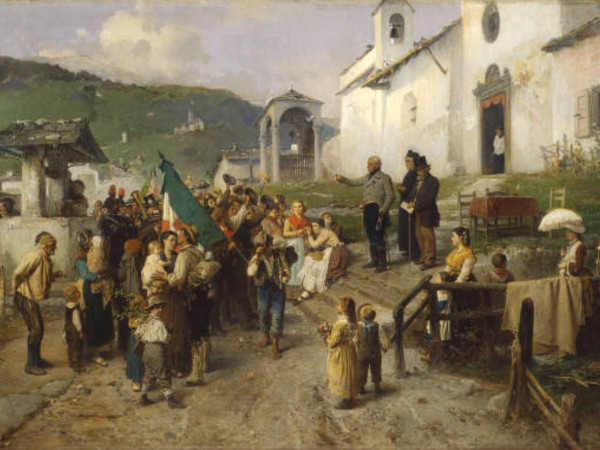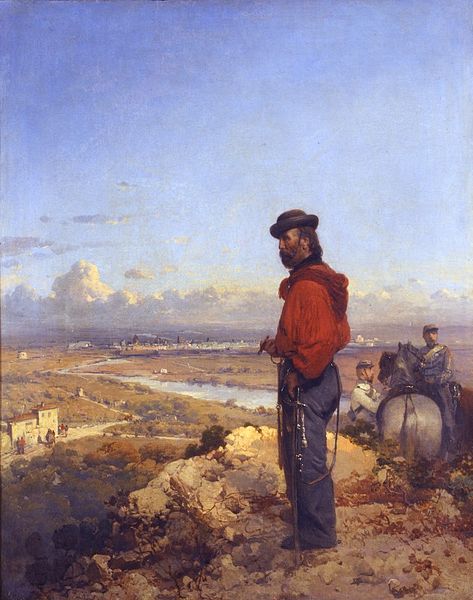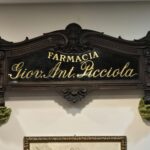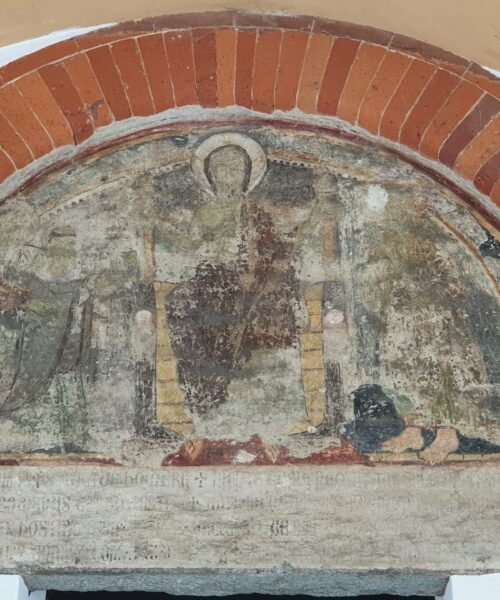The Risorgimento Epic, an extraordinary historical journey that shaped Italy between 1848 and 1860, stands out as a fascinating subject for art and history enthusiasts. The Risorgimento, focusing on the intellectual and artistic movements of the time, marks the rise of a new ruling class driven by liberal and progressive ideals.
A key figure in this narrative is Gerolamo Induno (1825–1890), a renowned painter who, along with his brother Domenico Induno (1815–1878), also a prominent painter, actively participated in the Risorgimento movements. Gerolamo’s artistic journey, which began under illustrious mentors such as Luigi Sabatelli and Francesco Hayez at the Brera Academy in Milan, showcases a significant influence in the evolution of Italian narrative painting.
His works, characterized by vivid and intense narration, focus on crucial moments in history, dramatically depicting the lives of the less fortunate. These images not only provide a visual chronicle of the times but also convey a deep sense of empathy and understanding towards daily struggles.
Gerolamo Induno’s life is an adventurous novel: an active participant in the anti-Austrian uprisings of 1848, he shared exile with his brother in Switzerland before returning to Italy to fight in the defense of the Roman Republic. During a bloody siege there, he suffered twenty-five bayonet wounds and narrowly escaped capture. These experiences forged Gerolamo’s resilient and combative character, deeply reflected in his art.
The painter did not merely witness historical events; he also fought valiantly in the Crimean War in 1855, earning recognition for his bravery. His art during this period evolved, alternating between battle scenes and intimate, incisive portraits of historical figures, including numerous portraits of Garibaldi, who called him one of the most “intrepid and valiant fighters of Rome.”
Gerolamo Induno’s works, characterized by a mix of nostalgia, romanticism, and rhetoric, are exemplary for understanding the Risorgimento period. His ability to capture the details of daily life so evocatively and movingly marked a significant artistic era. Along with his brother Domenico, he helped define a genre of painting that explores profound and touching human situations.
The representation of the “private” side of historical events, emphasizing intimate and personal moments, reveals a unique aspect of Gerolamo Induno’s artistic vision. Through his paintings, we can immerse ourselves in the historical reality of the Italian Risorgimento, appreciating his art not only as a historical testimony but also as a profound expression of the human condition.
















